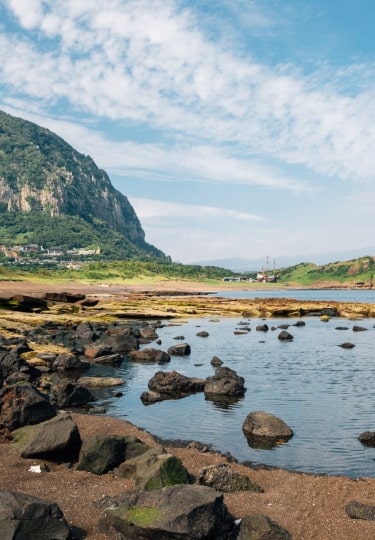Jeju Island, a subtropical, oval-shaped chunk of land floating off the Korean Peninsula’s southern shores, is a volcanic wonderland. The best beaches on Jeju Island—often tucked away in between stunning volcanic geological formations—are easy to locate and enjoy.
Jeju’s unique topography, fresh-as-can-be seafood, longstanding cultural traditions, and sandy shores are bound to captivate your heart and mind.
Here are some of the best beaches Jeju Island has to offer.
Hamdeok Beach
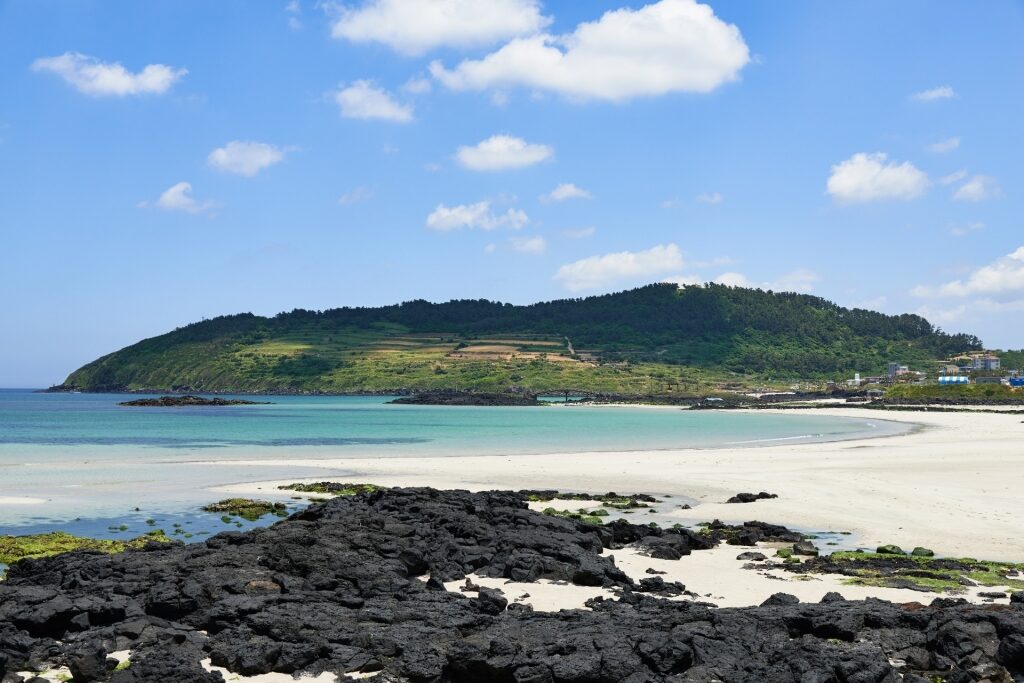
Hamdeok Beach
Hamdeok Beach, east of Jeju City, is actually three beaches folded into one. And while peak season can see the strand get fairly crowded, the family-friendly Hamdeok—complete with all of the beachside facilities you’d expect—has plenty going on for it to keep you occupied for the better part of a day.
One of Hamdeok Beach’s biggest selling points is the wind protection offered by Seoubong Peak, which pushes up against the beach’s eastern edge. And while Jeju is known for its strong winds and turbulent weather, Hamdeok, thanks to its sheltered locale, is virtually wave-free.
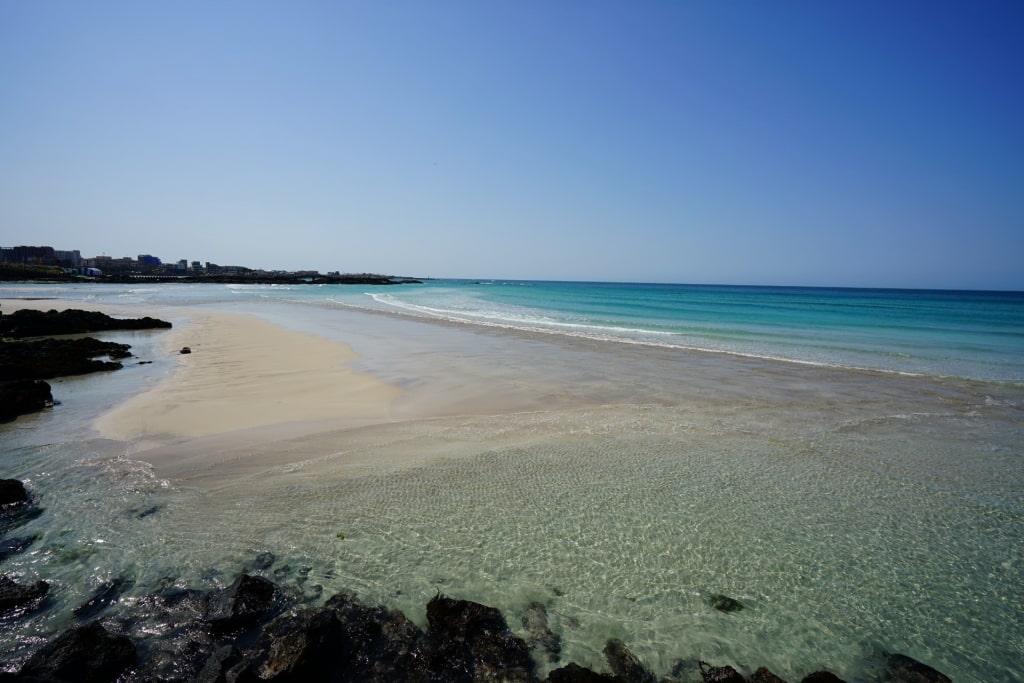
Hamdeok Beach
The largest of the three beaches here features a natural sandbar as well, which offers even more protection and warm water; it’s an ideal spot for swimming or wading in the gentle surf.
Visiting here is one of the best things to do in Jeju Island, with kayaking, water skiing, banana boat rides, and other water sports being popular diversions along these shores. You’ll find a few seafront cafés and restaurants at Hamdeok too. Café Delmoondo, perched atop a rocky dune next to the turquoise water, is a favorite among locals.
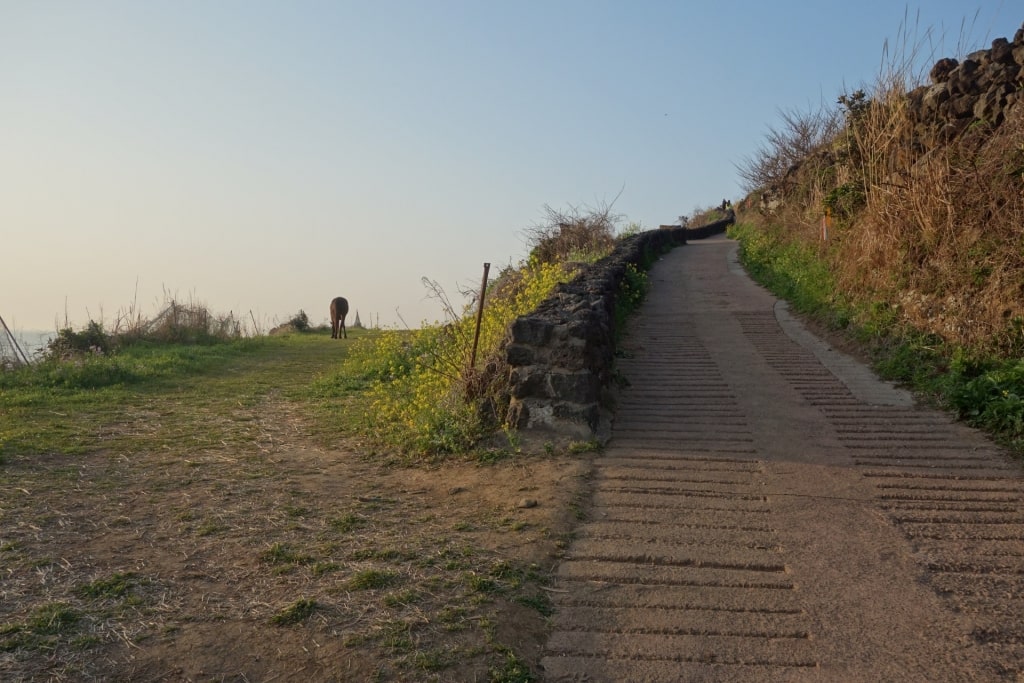
Seoubong Hill
The least crowded beach tends to be the one closest to Seoubong Hill. If you need to stretch your legs, you’ll find a rural path leading up to Seoubong. You can also stroll between the different beaches, or scramble around the black lava rock outcroppings scattered about.
Jungmun Saekdal Beach
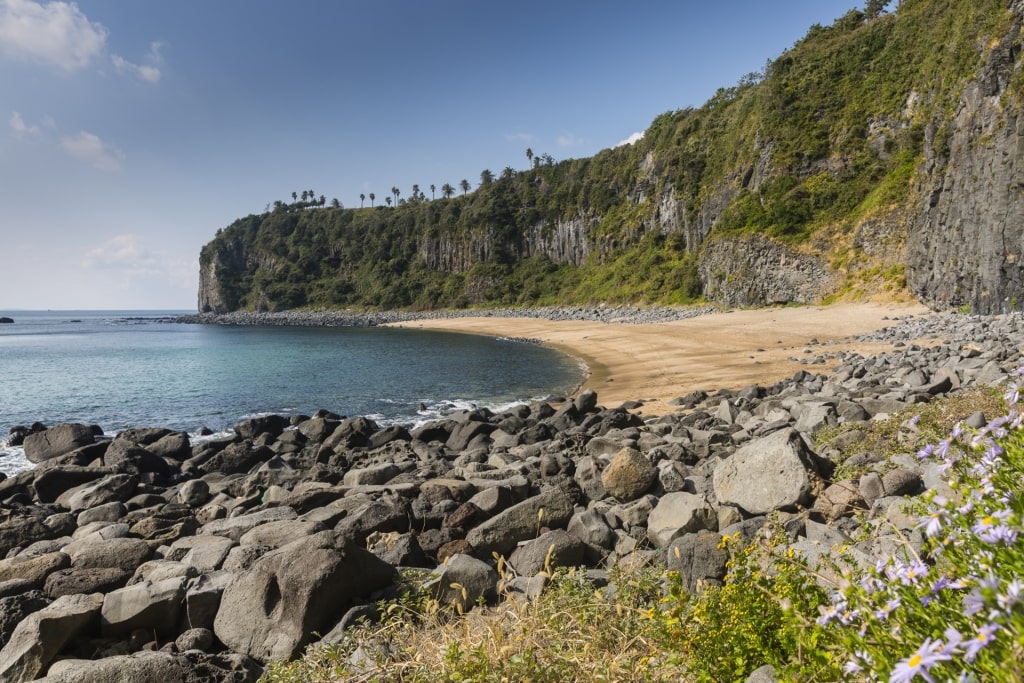
Jungmun Saekdal Beach
If you go looking along the southern shoreline of this beautiful island in Asia, you’ll discover Jungmun Saekdal Beach.
This seashore is in the vicinity of the Jungmun Tourist Complex, which features botanical gardens, the Cheonjeyeon Waterfalls, a golf course, museums, and more. Jungmun Saekdal itself is embraced by steep cliffs to the north, providing the beach with a secluded ambiance, despite the occasional crowds.
One thing to appreciate here, apart from the picturesque, cliffy backdrop, is this crescent-shaped beach’s fine-grained, multi-colored “jinmosal” sand. If you like soft sand squishing between your toes, this is the place to go.
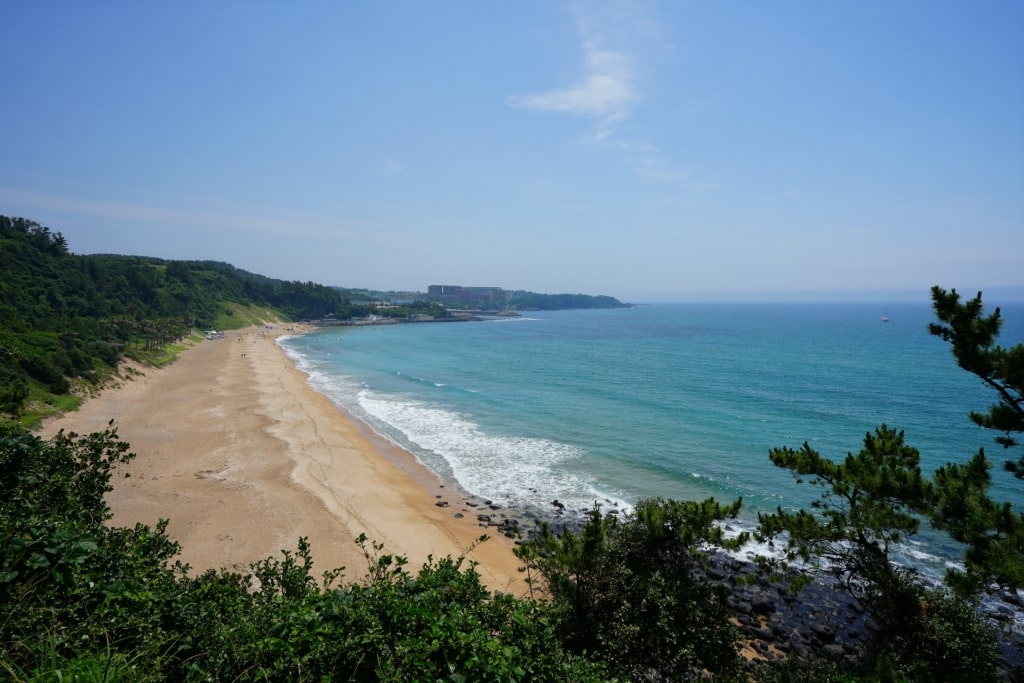
Jungmun Saekdal Beach
While you can swim here, the water is much rougher than at Hamdeok Beach; the incoming waves can be a lot to deal with at times. Due to the waves, Jungmun Beach is a popular spot for surfing, with parasailing and waterskiing on the aquatic playtime menu as well.
East of the beach, across Sombancheon Stream, you’ll find a seafood joint going by the name of “The House Jeju Haenyeo.”
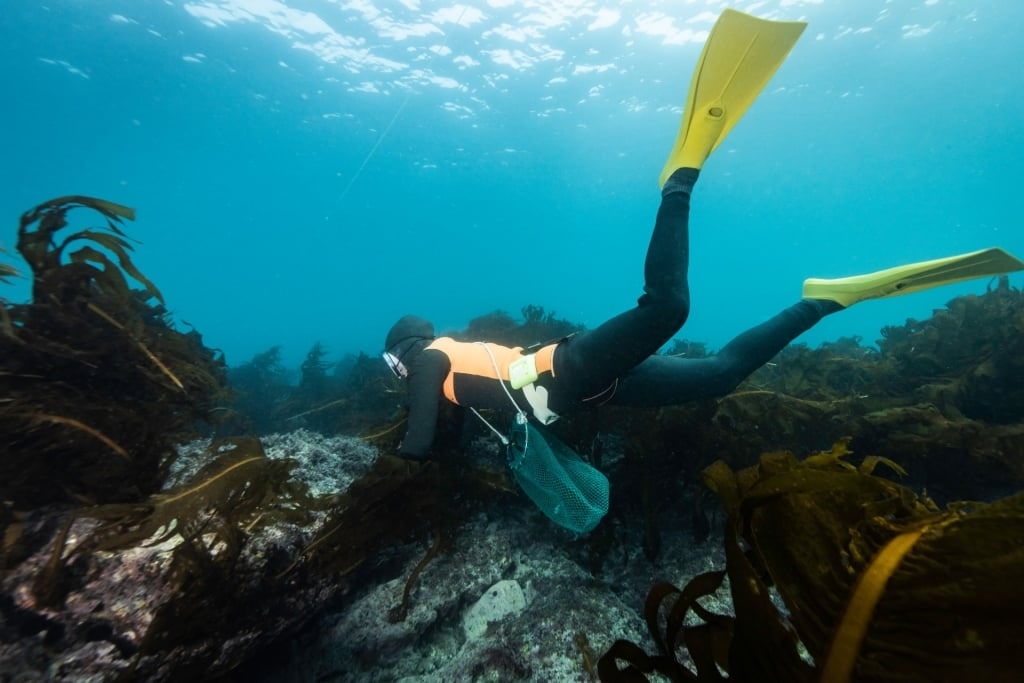
Haenyeo
Haenyeo are (often) elderly female free divers with centuries of tradition behind them, who plunge down into the cold waters around Jeju to retrieve the bounties of the sea.
These hearty women, some of whom are octogenarians, dive only wearing a wetsuit and carrying a sharp blade for prying stubborn mollusks off of submerged surfaces. Their resistance to the chilly ocean should be the envy of the most ardent cold plunge enthusiasts, no matter their age.
Near this haenyeo-themed house, you might spot haenyeo women hawking fresh abalone, clams, sea cucumber, octopus, oysters, and other delicacies from just offshore.
Pyoseon Haevichi Beach
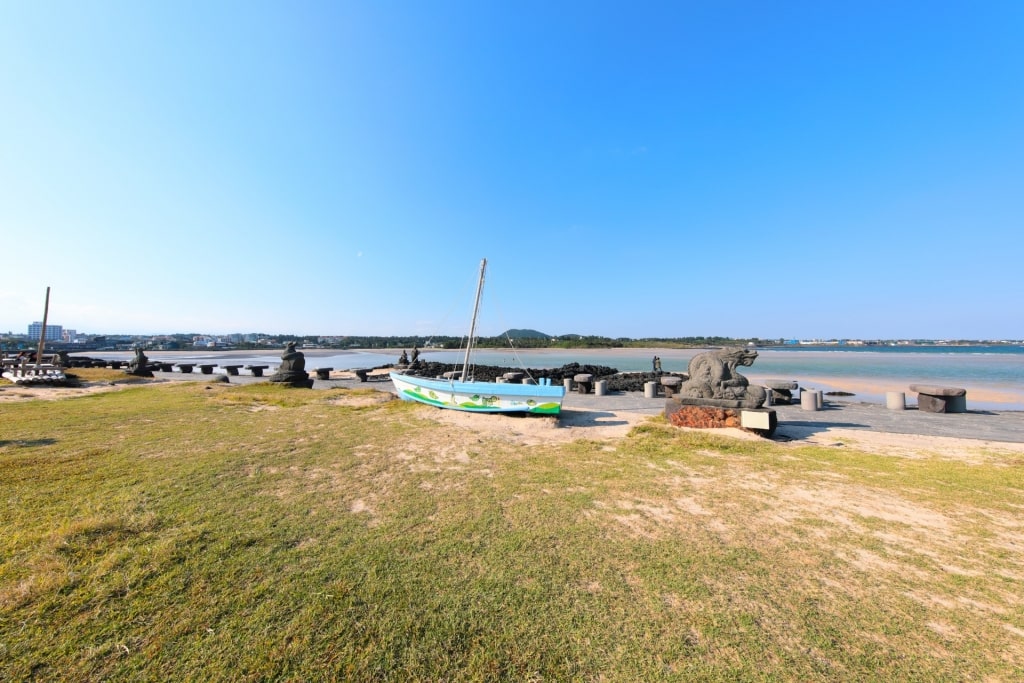
Pyoseon Haevichi Beach
Pyoseon Haevichi numbers among the best beaches on Jeju Island thanks to its shallow water, and its expanse of pretty white sand, which really comes into its own when fully exposed at low tide. The sublime vistas on offer, looking east toward the sea, aren’t too shabby either.
The real magic here is when the tide comes in. High tide transforms the curved shoreline into a pond-like wading pool. The tranquil water is perfect for splashing about and getting your feet wet. Showers, changing rooms, and all of the amenities you’ll need can be found at the beach as well.
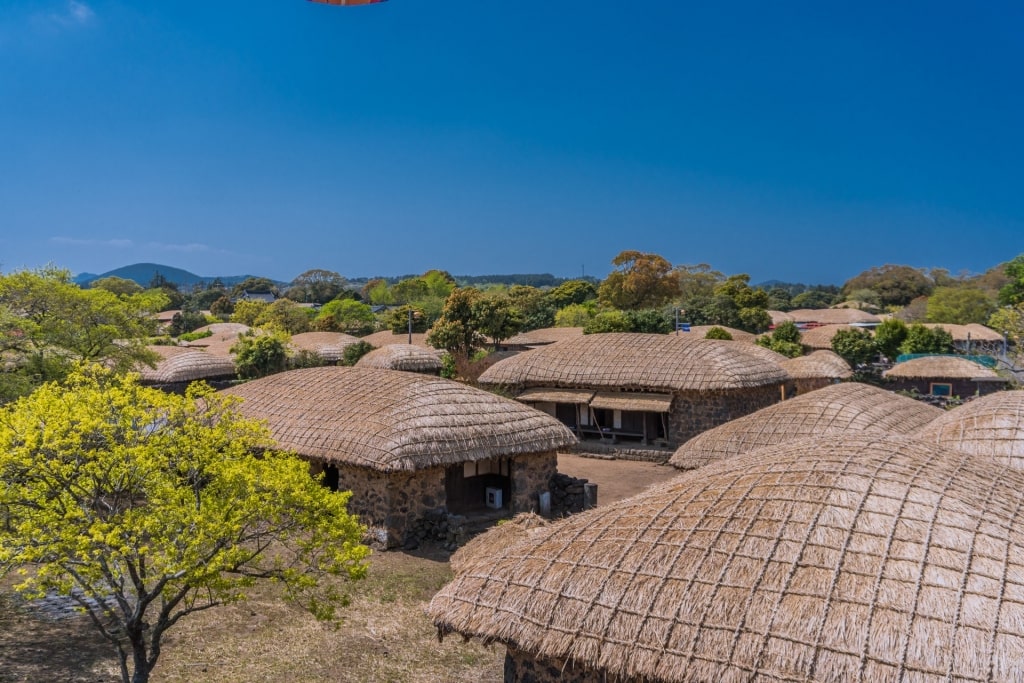
Seongeup Folk Village
If you’d like to learn more about the local culture while in the area, visit the nearby Seongeup Folk Village and Jeju Folk Village Museum. The Jeju Folk Village Museum, with rock walls made out of black lava, traditional thatch-roof Jeju homes, and Dol hareubang “stone grandfather” volcanic rock statues, will offer you a fascinating window into the island’s traditional ways of life.
Hyeopjae Beach
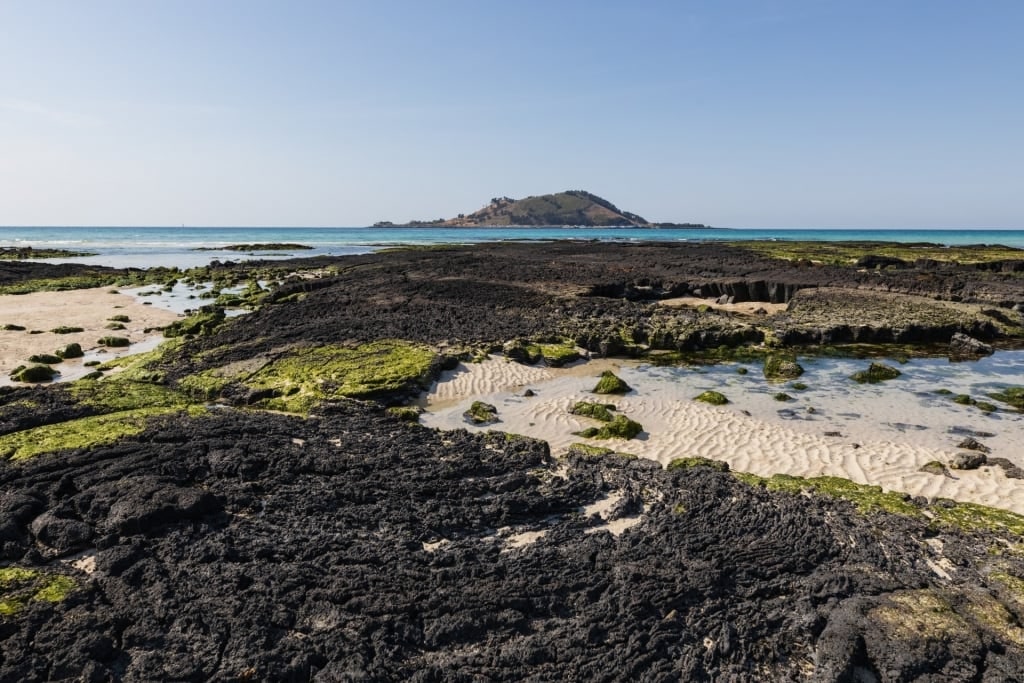
Hyeopjae Beach
If you make your way to Jeju’s northwest coast, you’ll come face to face with one of the most picturesque sweeps of sand on the entire island, otherwise known as Hyeopjae Beach.
This large ribbon of beautiful white sand, fronted by crystal-clear, azure-colored water, stretches even farther out into the sea with low tide. In the distance, you can spot the hump of the tree-covered Biyangdo Island, which only enhances the oceanside scenery.
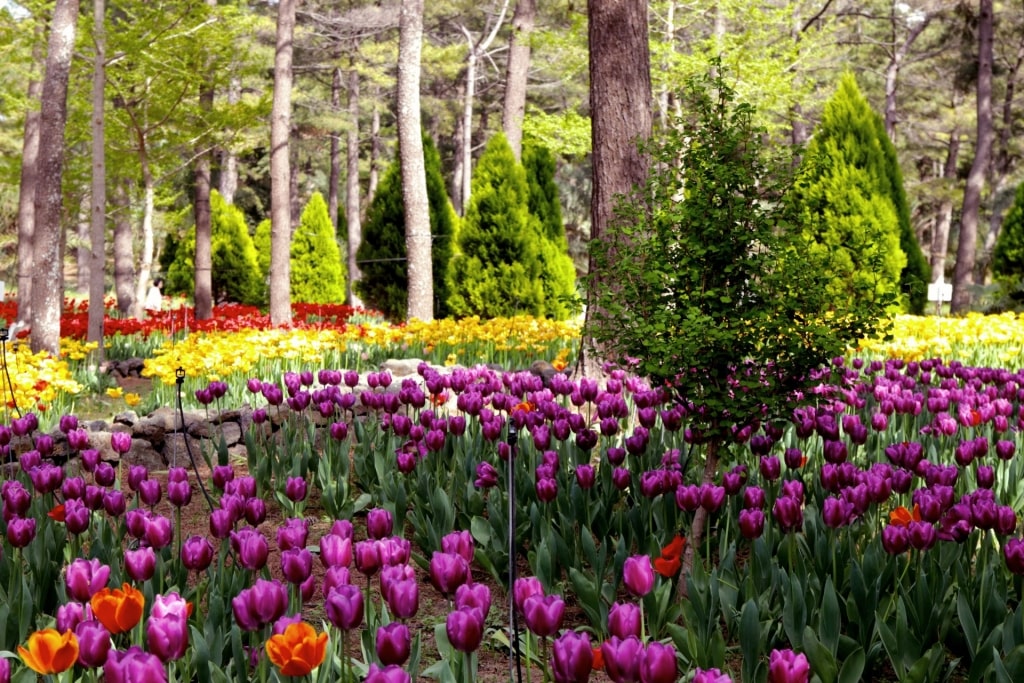
Hallim Park
You’ll also find a lively shipping container village close to Hyeopjae; the containers have been repurposed as eateries and shops. And just across from the beach, you have Hallim Park, a verdant botanical garden that serves as a repository for greenery from around the globe.
Hallim Park also features gorgeous lava caves and lava tubes, with well-maintained, illuminated paths to light the way as you roam around these hardened volcanic marvels.
Read: Remote Islands Worth Exploring
Gwakji Gwamul Beach
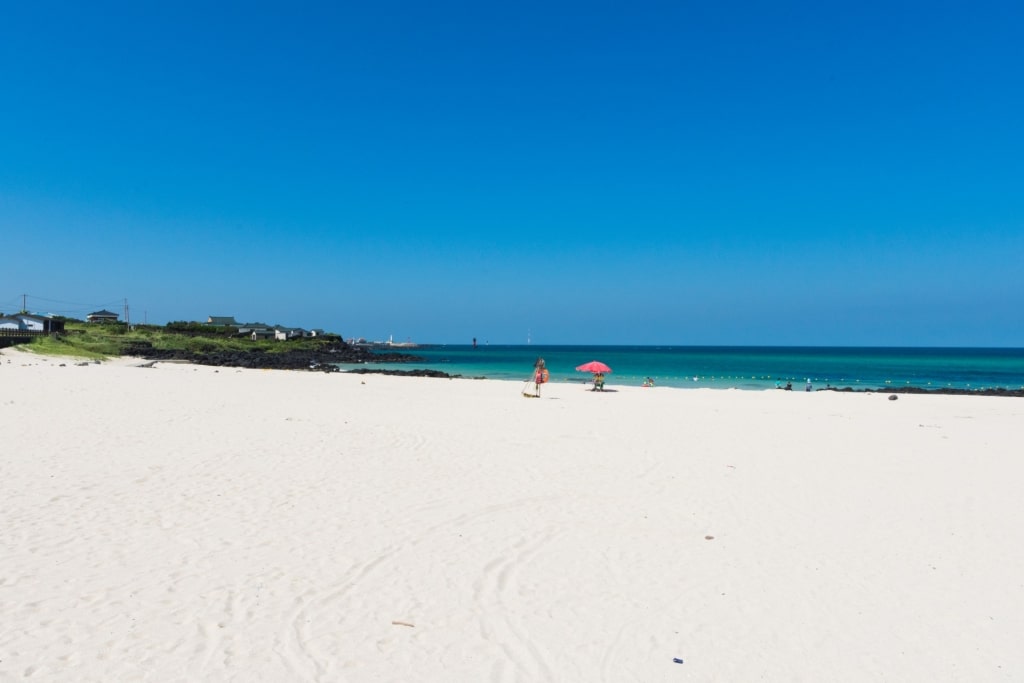
Gwakji Gwamul Beach
Gwakji Gwamul Beach, which faces north, toward the Korean mainland, is one of the best beaches on Jeju Island, especially for people who appreciate large sandy spans that aren’t overly crowded or stuffed to the brim with attractions.
Besides going for a swim from the soft sand here, other activities you can participate in include searching the beach for clams or taking in the different chiseled sculptures dispersed around the shoreline along the beach’s rocky volcanic outcrops.
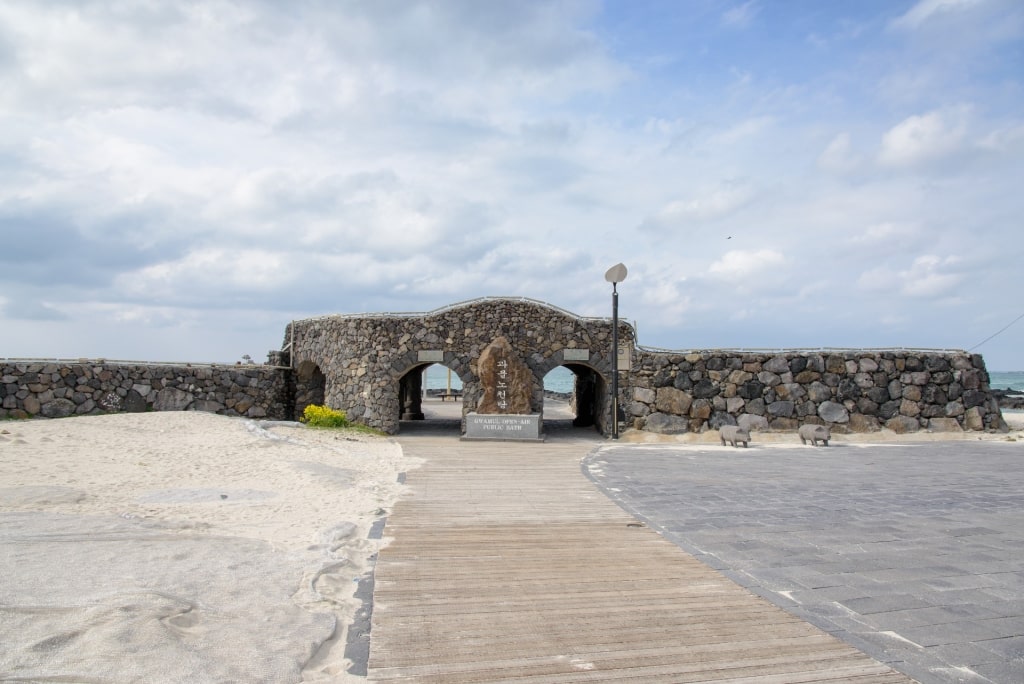
Gwamul open-air public bath
Another highlight here is the Gwamul open-air public bath, which is fed by cold, fresh spring water. Once you’ve had your fill of the salty ocean waves, head over to these volcanic stone baths, shed your clothes (the facility is divided into men’s and women’s areas), then rinse all of that sticky sea spray off your skin.
Hado Beach
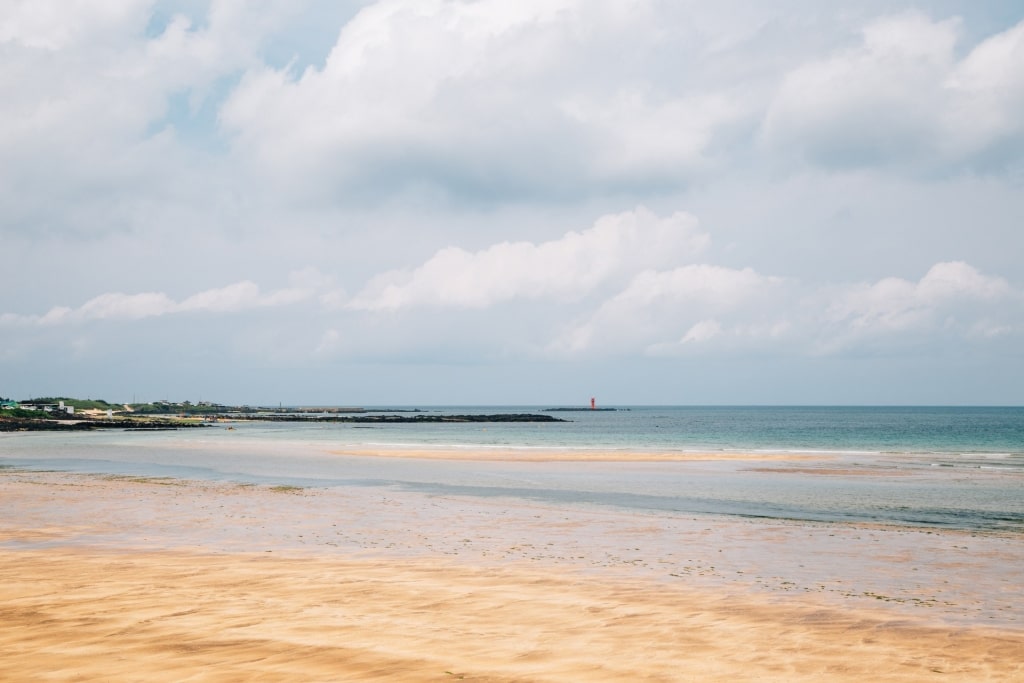
Hado Beach
If you head toward Jeju’s eastern flanks, you can call upon the fairly secluded Hado Beach. This is the place to go if you’re trying to avoid the multitudes of holiday beachgoers.
And while Hado doesn’t have much in the way of public amenities, the peace and quiet here, along with the swimming, surfing, and fishing potential, make this an ideal locale for enjoying the simpler pleasures the sea has to offer.
Hado Beach, and nearby Hado Village, with fishing as its main industry, are also spots where you can watch the haenyeo diving women jump into the water. It’s always a thrill to see these stout ladies, knife in hand, collect their daily catches of abalone and other goodies from the ocean.
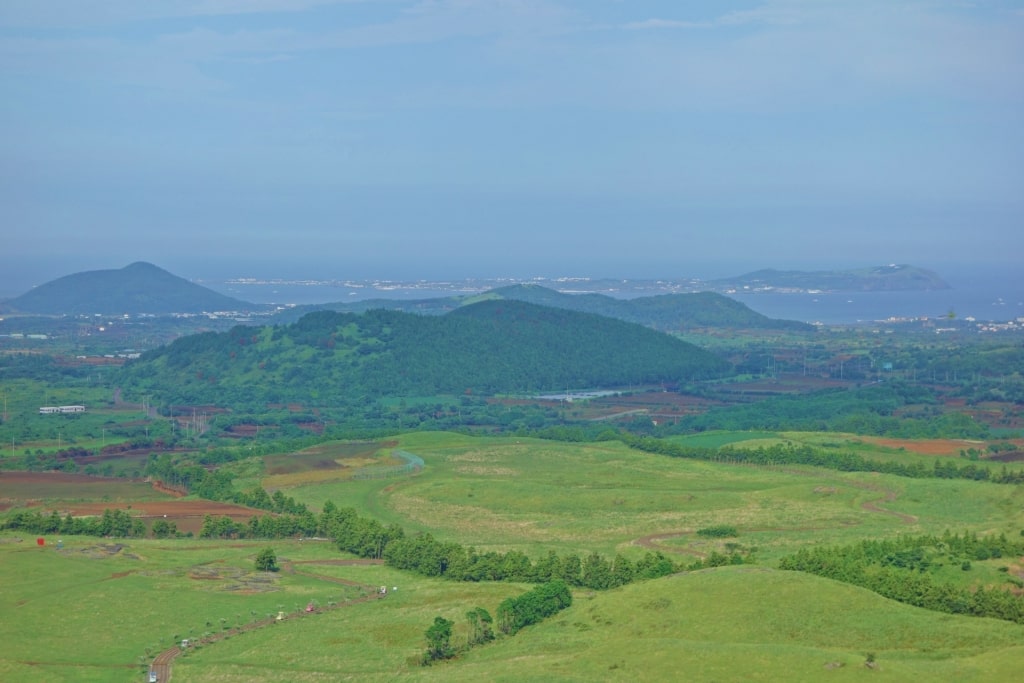
Jimibong Volcanic Cone
One of the most distinctive geographical features in the Hado area is the Jimibong Volcanic Cone, just south of the beach.
After exploring the sandy shores or taking a dip, you can opt for a hike up to the summit of this impressive-looking cone. Jimibong, also a bird sanctuary, will treat you to commanding views of the surrounding countryside and seascapes.
Sagye Beach
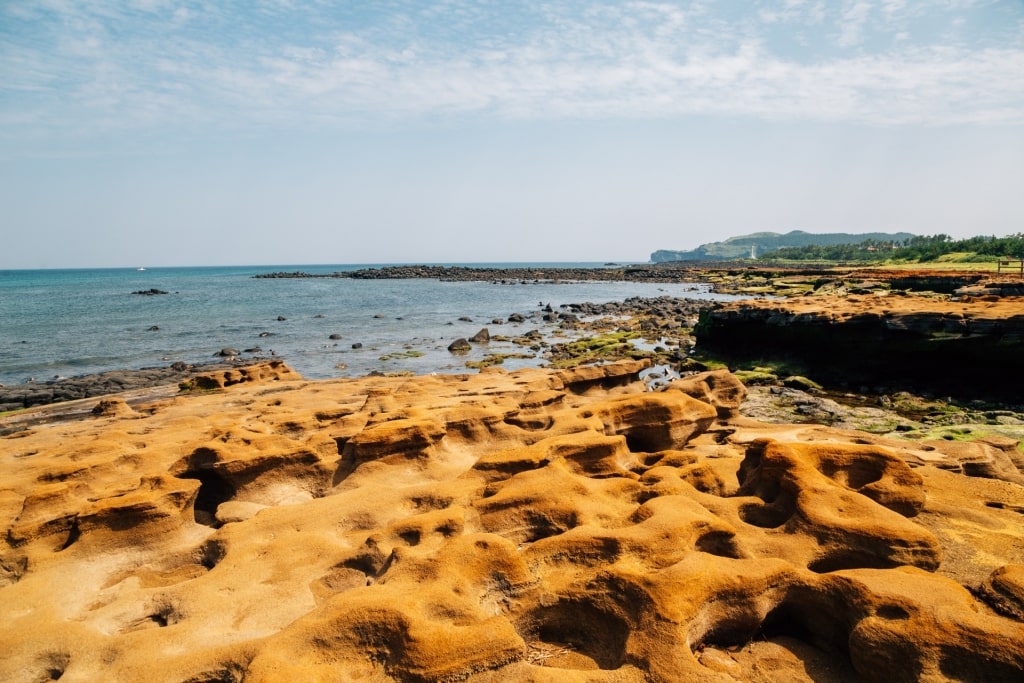
Sagye Beach
Sagye Beach, in the southwest, is a rugged stretch of shore popular with surfers and kite surfers, although this beach isn’t really known as a relaxing spot for soaking up the sun’s rays or going for a leisurely plunge. The currents here can be a little strong for swimming, but on the upside, you won’t have to endure elbow-to-elbow crowds.
The beach’s outstanding views of the dome-shaped Mount Sanbangsan, which juts out of the earth like a towering temple of hardened lava, is another reason why you should visit this length of coastline.
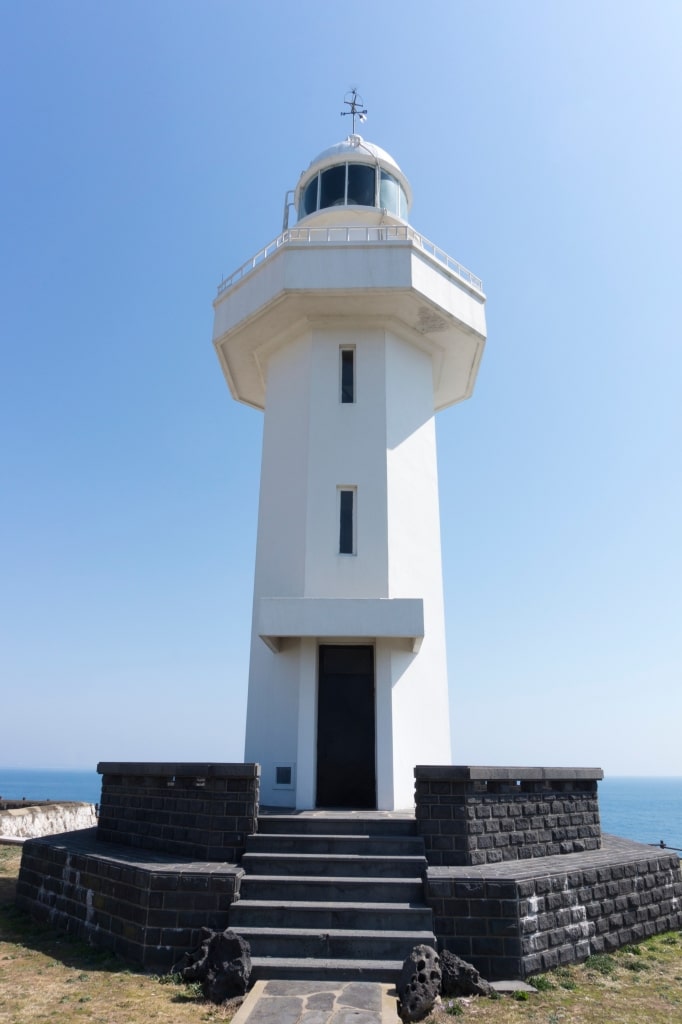
Marado Lighthouse
Sagye also comes with wonderful views of the uninhabited Hyeongjeseom islet, as well as Marado Island, with less than 100 full-time residents. The main structure on Marado Island is the white Marado Lighthouse, surrounded by a “sea” of green grass.
Another interesting fact to note is that the silky-smooth sand at Sagye is black in color, which offers a stunning contrast to the blue water lapping against the shore. If a secluded beach setting appeals to your romantic side, Sagye should delight you to no end.
Samyang Black Sand Beach
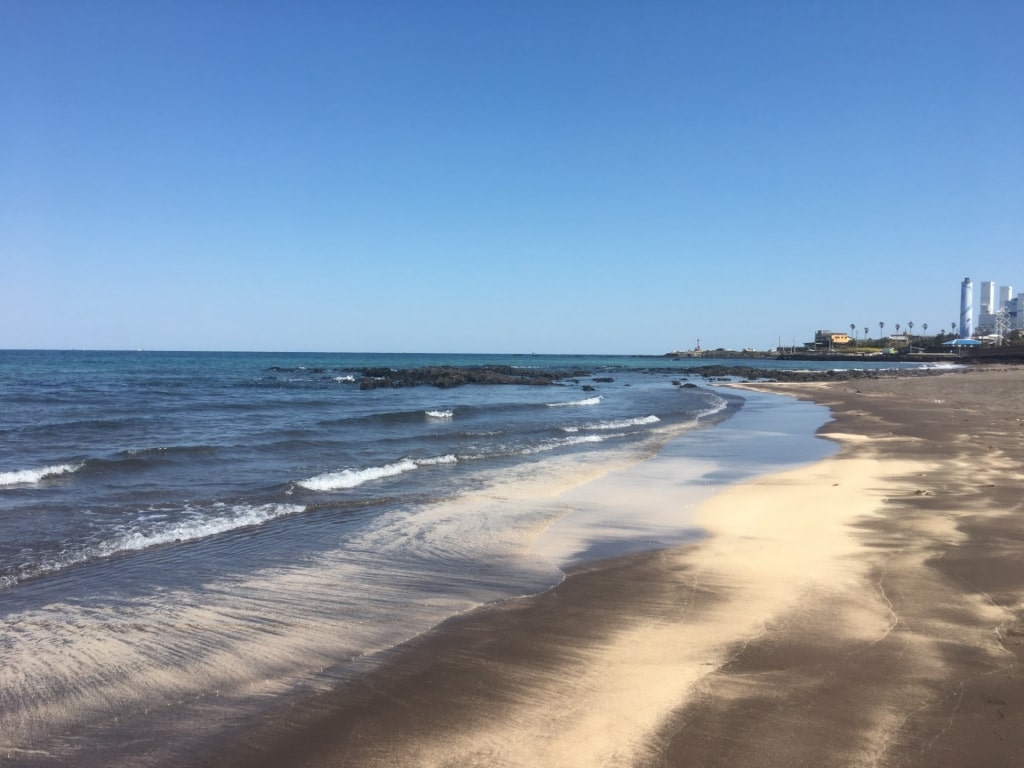
Samyang Black Sand Beach
Continuing with the theme of black sand beaches, Samyang Black Sand Beach is composed of dark black volcanic grains of sand. Samyang is just east of the Port of Jeju.
To be fair, Samyang isn’t the most picturesque of Jeju Island’s numerous beaches, although it’s not an eyesore by any stretch of the imagination. And you won’t find many tourists here either. This is a destination for locals, although you’re more than welcome to visit.
What Jeju’s inhabitants seem to worship most about this beach is the purported therapeutic properties of the volcanic sand here. You’ll often see folks buried up to their necks in black sand as they try to reap the health benefits. It’s the DIY version of a warm mud wrap you might book at a fancy spa.
Woljeongri Beach
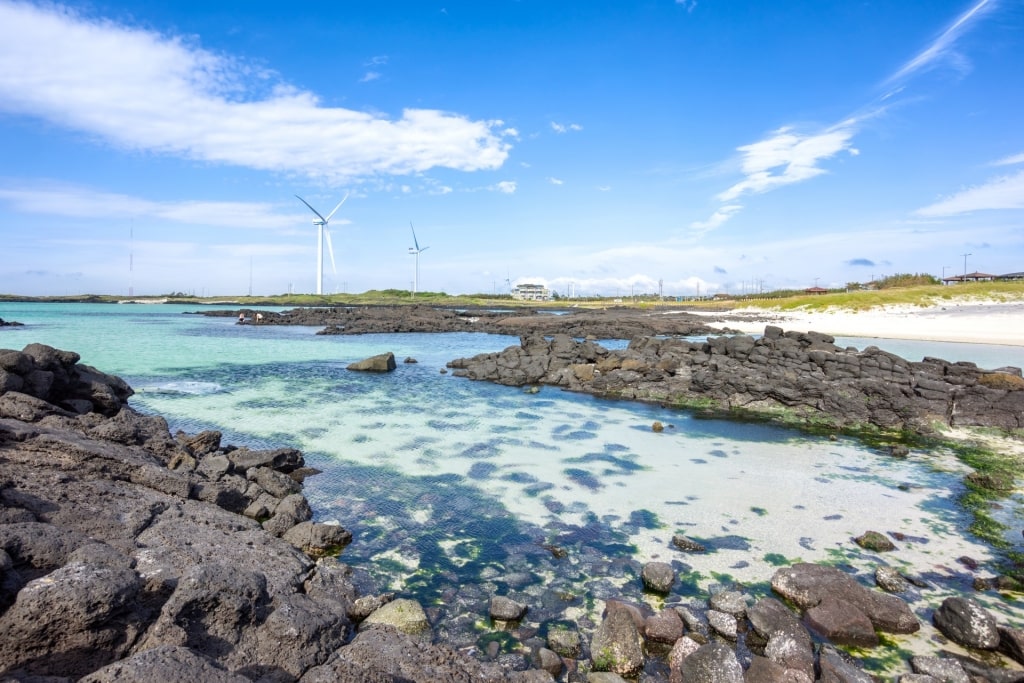
Woljeongri Beach
Woljeongri Beach, in the northeast, is a length of soft white sand hemmed in by glittering greenish-blue water, with towering white wind turbines dotted around the surrounding landscape. This beach is a great spot for a swim, and also benefits from a lively oceanside café and restaurant atmosphere.
Many of the stylish bistros and cafés here feature outdoor dining areas, or colorful wooden chairs placed outside. Sit down and take in the sea panoramas while you sip on a hot or cold drink.
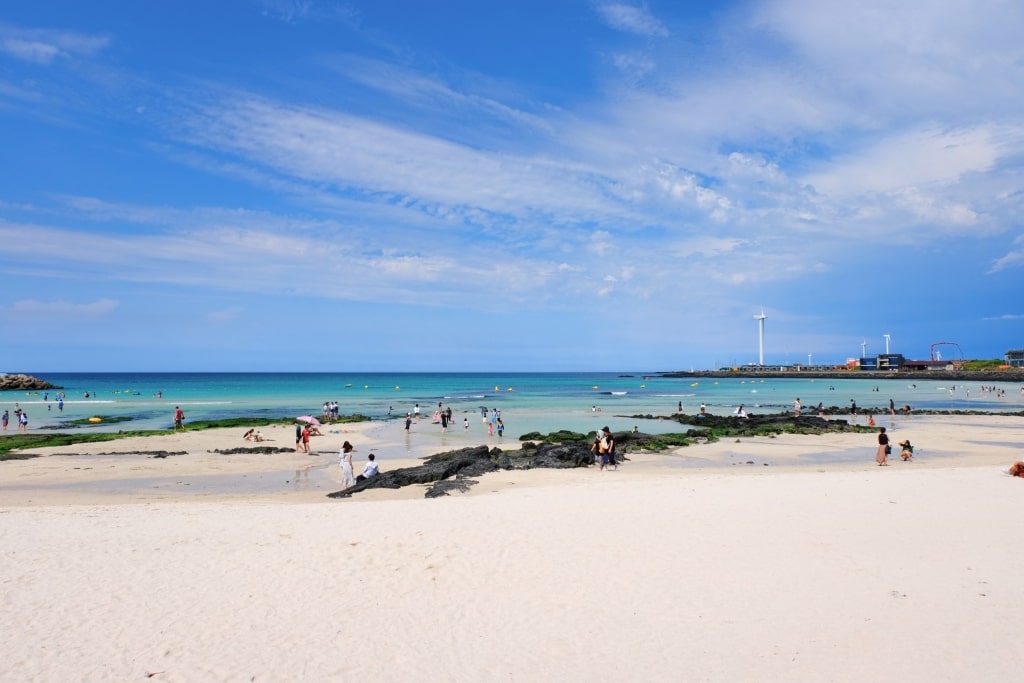
Woljeongri Beach
You can linger inside the coffee shops here, hit the surf, rent a kayak, or simply soak up the sun (or take cover in a restaurant on a rainy day).
The name woljeongri means “the moon stays” in Korean, which is very poetic indeed. Woljeongri Beach, as it happens, is also a stop along the extensive Jeju Olle Trail (Route 20).
Jeju Olle (Coastal) Trail
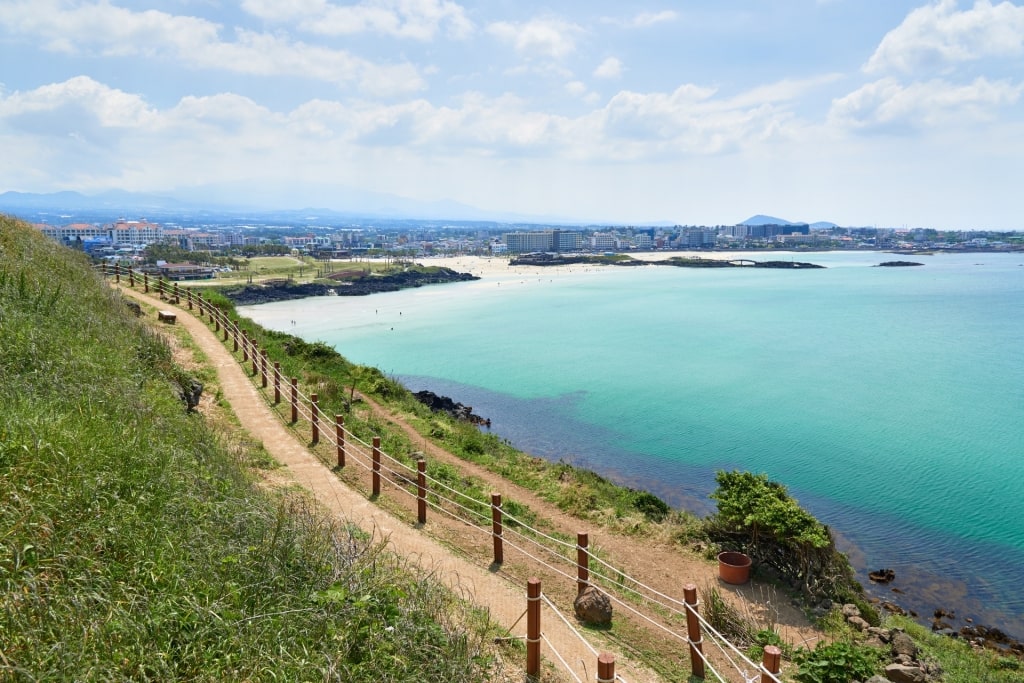
Jeju Olle (Coastal) Trail
While the Jeju Olle Trail isn’t technically a beach, it’s worth mentioning, as this eco-friendly coastal trail—with 27 official routes, coming in at 272 miles in length overall—will take you past some of, if not all of the best beaches on Jeju Island.
Don’t let the considerable length of this trail put you off. You can tackle individual routes in reasonable amounts of time (four to six hours, on average).
The full track circles Jeju’s entire coastline, running past beaches, craggy cliffs, crashing waves, cultural waypoints, fishing villages, tidal pools, waterfalls, woodlands, volcanoes, and more.
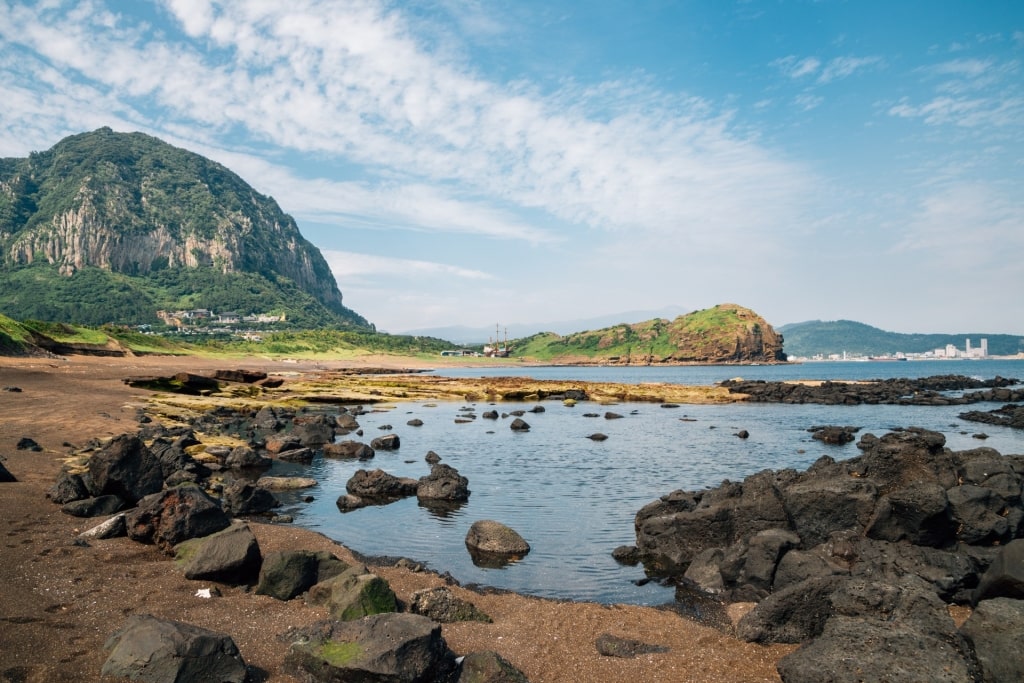
Yongmeori Beach, Jeju Olle Coastal Trail
You can even get stamps in your certified “Jeju Olle Passport” (passport proceeds go toward maintaining the trails) at pony-shaped metal stamp stations along the different routes. Collect all of the stamps, and you’ll receive a finisher’s certificate to commemorate your epic hiking achievements.
Iho Tewoo Beach
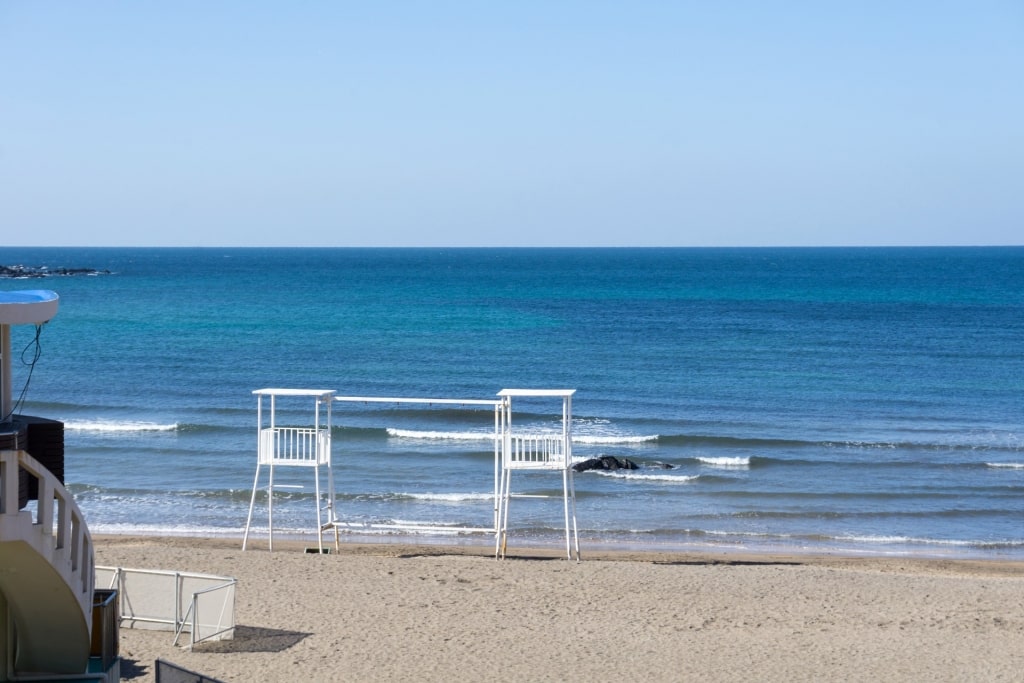
Iho Tewoo Beach
If time is a concern, but you’d still like to swing by a sandy beach, Iho Tewoo Beach, just west of Jeju International Airport and Jeju City, can easily fit into a busy schedule.
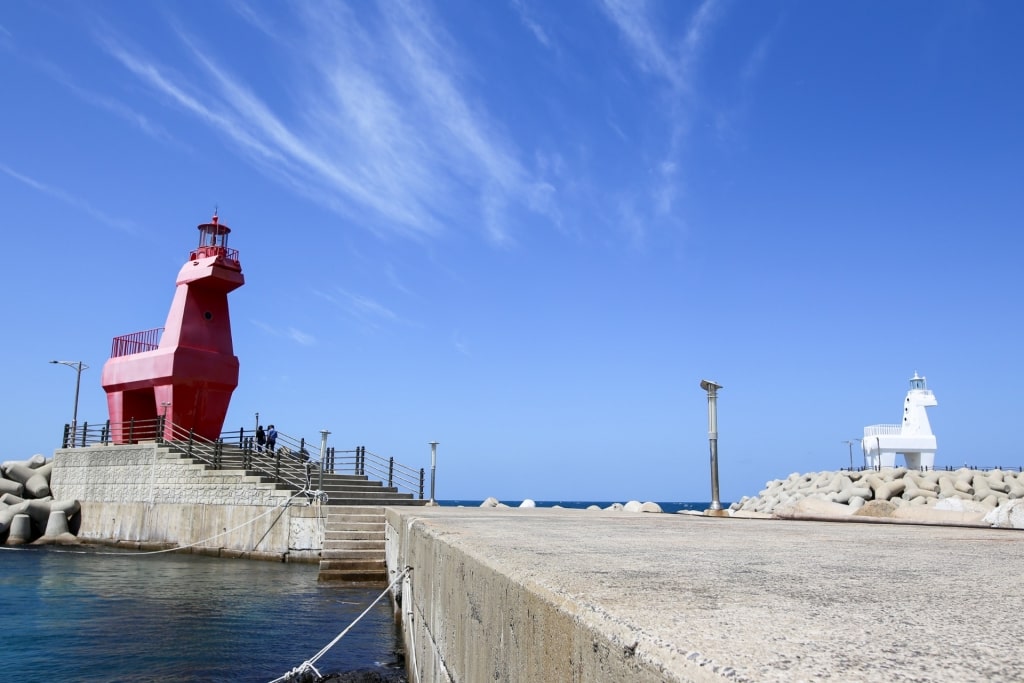
Iho Tewoo Beach
In addition to being a convenient location for going for a quick dip, or snagging some fish, Iho Tewoo’s biggest claims to fame are the two horse-shaped lighthouses keeping watch over the seawall and coastline.
One of these oversized horses is red in hue, while the other one is stark white, matching the color of the sea froth as the surf rolls in toward shore.
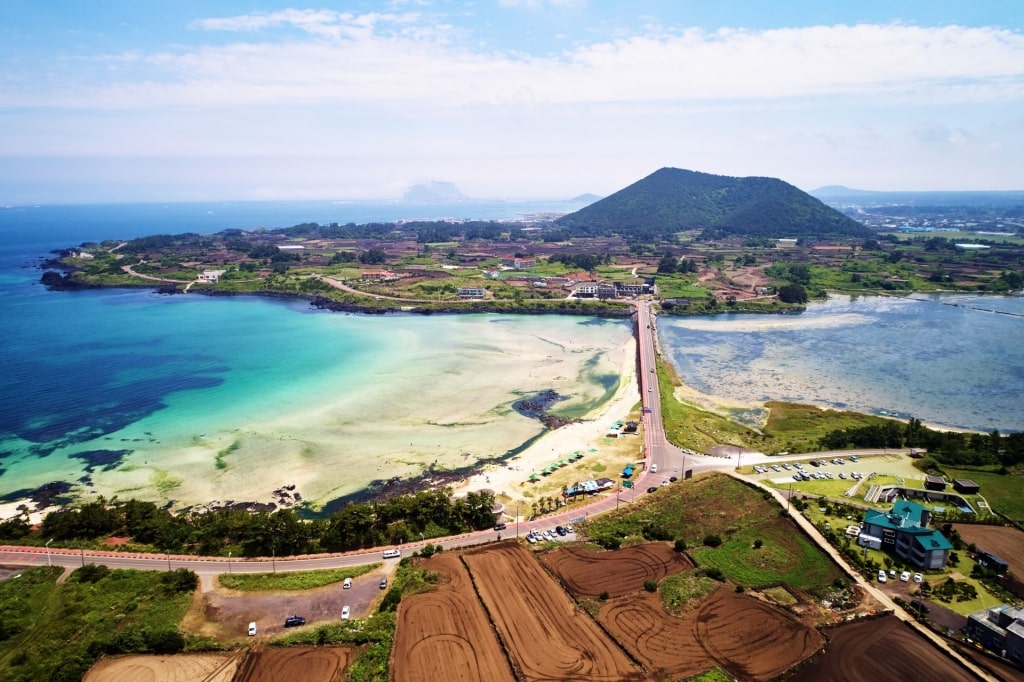
Jeju Island
If the island’s beaches and coastal allure have aroused your curiosity, browse cruises to Jeju Island and book your next incredible seafaring vacation to East Asia.
